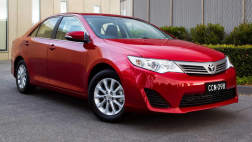Even better, it will plot the greenest route for any trip to minimise fuel consumption and harmful emissions. Well, this car is coming. And coming fast.
It is the focus of a major research project at Swinburne University of Technology in Melbourne that also involves many major Australian automotive companies, including GM Holden. "The objective is that the car can help you to do your work," says Jun Han, professor of software engineering at Swinburne.
"The key objective is yes, to make the car connected . . . and to have all the information available and at the same time reduce driver distractions. The information is only available when you need it and when you asked for it." He says cars will soon be bombarded by information from wireless networks over every road and route, as well as the same satellite connections used for navigation.
They will also be linked to work and home computer networks for things such as calendars and contacts, allowing the driver and passenger access to an incredible range of information and "The car can talk to anything. Wirelessly or whatever. And there will also be vehicle-to-vehicle communication," Han says.
The result is a new generation of interactive information systems that allow cars to do the thinking for you. "Some cars already have certain fixed systems, like weather reports or traffic information. There will be a much broader range of services."
Han says the systems could be operating in less than five years, once cars are equipped with the hardward to tap the information superhighway. Swinbourne already has pilot cars and is working towards a major on-road trial with up to 200 cars. "It won't be too long. In Australia we are doing it, and in Europe particularly they are doing it," he says.
"I would imagine three to five years. The basic technology and connectivity is there. It's a matter of the software that's really to locate the services and do the intelligent matching. "You can just add another board under the dashboard and it can happen. It doesn't have to be new cars. We are working to integrate sensibly with the current electronics in a car."
The Swinburne project is part of of the work being done by Australia’s Co-operative Research Centre for Advanced Automotive Technology on ‘context aware’ systems for cars, culminating in vehicles that are constantly working for and with their driver. "If your car knows when the fuel is low, it will link it up to the petrol stations. And link to your loyalty program," Han says.
"The current hot topic is emissions and CO2. So if you know where the traffic is, you might choose the best route in terms of carbon emissions. It might not be the best route for time, but best for the environment." Hans says there is no plan to take control of the car, but to make travel easier and less distracting.
"You still drive the car around to get from A-to-B. We want to reduce the workload but also the distraction." Han can also see beyond intelligent systems for cars to a transport network that involves cars, trains, trams, buses, trucks and even systems managing pedestrians. “This would lead to greater transport efficiency and safety, while at the same time reduce vehicle emissions on a city-wide basis,” he says.







.jpg)
.jpg)
.jpg)

.jpg)








Comments